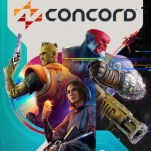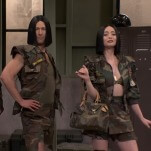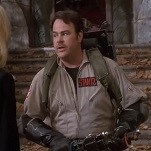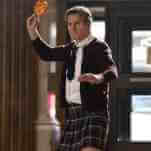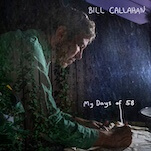Pop culture can be as forbidding as it is inviting, particularly in areas that invite geeky obsession: The more devotion a genre or series or subculture inspires, the easier it is for the uninitiated to feel like they’re on the outside looking in. But geeks aren’t born; they’re made. And sometimes it only takes the right starting point to bring newbies into various intimidatingly vast obsessions. Gateways To Geekery is our regular attempt to help those who want to be enthralled, but aren’t sure where to start. Want advice? Suggest future Gateways To Geekery topics by emailing [email protected].
Geek obsession: EC Comics
Why it’s daunting: For starters, there’s a lot of material to sort through. When comics publishing pioneer Max Gaines died in a boating accident in 1947, he passed on Educational Comics to his son William. Initially reluctant to take over the family business, and bored at the prospect of publishing more titles like Picture Stories From The Bible and Saddle Romances, Gaines shifted the emphasis to crime, science-fiction, war, and most famously, horror stories. He brainstormed stories with writer/editors Al Feldstein, Harvey Kurtzman, and Johnny Craig and sought out distinctive artists like Jack Davis, Wally Wood, Joe Orlando, Jack Kamen, Graham Ingels and others to bring the stories to life. (Notable artists in their own right, Kurtzman, Feldstein, and Craig also drew some of the stories they helped script.) Between 1949 and 1954, EC turned out issue after irregularly numbered issue of titles like Shock SuspenStories, Weird Science, and Vault Of Horror. Then it was forced to a sudden stop by a nationwide panic about comic books with graphic violence and sex.
That’s another reason approaching EC still seems daunting: Even nearly 60 years later, the company still carries the taint of a national outrage that led to congressional hearings and forced Gaines to defend his life’s work in a highly publicized hearing. Like the Tipper Gore-led protests against rock lyrics in the 1980s, it was an instance of uncontrolled, and largely unwarranted, moral flustery founded in questionable psychology and focusing on a few panels that looked tough to defend when removed from their context. Gaines also found himself lumped in with the less skilled, more shocking work of some of EC’s imitators. The hearings ended with the creation of an industry-wide self-censoring body called the Comics Code Authority. Effectively a Hays Code for comic books, it effectively forced EC to stop publishing stories in its signature style. (David Hajdu’s The Ten-Cent Plague offers a thorough, compelling account of the many-years-in-the-making-panic, EC’s role, and its aftermath.)
Finally, EC’s work has always been tough to track down. The original books are, of course, collectors’ items. The 1990s saw the arrival of thorough, though flimsy, double-sized reprints of the original comics, but finding them now means combing through the furthest reaches of comic-book stores. Publisher Russ Cochran started releasing handsome black-and-white hardbound editions in 1978, but these weren’t cheap then, and they’re more expensive and harder to find today. December 2006 saw what looked like a happy new development when Cochran and Gemstone Publishing started rolling out the EC Archives series, relatively inexpensive hardcover reprints of EC titles collected six at a time and faithfully re-colored with input from original colorist Marie Severin. Then in 2009, Gemstone’s financial troubles put the project on hold, leaving only a cryptic note on its website promising that the reprint series “seems certain” to “continue in some form.” Still, the project did produce 17 volumes filled with classic material before going kaput. Including…
Possible gateway: EC Archives: Shock SuspenStories Vol. 1
Why: EC badly needs a greatest-hits collection showcasing the publisher’s best work in horror, crime, science-fiction, adventure, and war stories. Currently, readers have to jump into the deep end with the title of their choice. Those who want a sampler, however, can start with reprints of Shock SuspenStories. Launched in 1952 at the height of EC’s popular success and creative powers, and edited and written by Feldstein, Shock SuspenStories featured a little bit of everything, roping together horror, crime, war, and science fiction from across the line. These weren’t mere leftovers, either. Though, like all EC titles, the stories range from inspired to repetitive, Shock SuspenStories contained some of the publisher’s best work.
It also included some unabashedly socially conscious efforts in the EC style, using the company’s darkly ironic wit to tell stories condemning racism, anti-Semitism, and misdirected patriotism at a time when such subjects were rarely broached in polite company. But comic books, and especially EC Comics, never pretended to be polite. A story that ended with a full-page depiction of a man hosting a dinner party for a bunch of headless corpses could segue into “The Guilty,” an unflinching tale of racist mob violence drawn by Wally Wood that “might have taken place anywhere in the United States. It could have happened in your town!”
Another of the volume’s stories—”Split Second,” drawn by the great Jack Kamen—serves as a compact introduction to the morality governing the EC universe. In it, an ill-mannered he-man lords over a remote logging camp where he allows only one woman to live: his own wife. The wife takes a shine to a handsome, axe-swinging new arrival who rejects her. Feeling spiteful, she accuses him of attempted rape, leading her husband to beat the kid blind. But that’s okay: Even blinded, he can still swing an axe like a champ, so his co-workers decide to give him a treat. Telling him he needs to practice for a wood-chopping contest, they set him loose on a hollow log filled with the boss who attacked him. Bound and gagged, the brute can’t call out as he watches the kid innocently chop him to bits, while his wife, also soon to fall victim to the axe, looks on in horror. The moral is simple: Do unto others as you better damn well expect to be done unto you tenfold by the end of the story. (The story also spotlights an unfortunate tendency for EC women to be little more than temptresses or castrating shrews.)
Next steps: Stories written by the super-prolific Feldstein dominated the line, but EC had another editorial mastermind in the form of Harvey Kurtzman. Kurtzman headed two titles: Frontline Combat and Two-Fisted Tales, both dominated by war stories, including many set within the then-ongoing Korean War. Breaking with the tradition of portraying war as a blood-and-guts adventure, Kurtzman’s stories stripped the phrase “war is hell” of cliché. In Kurtzman’s comics, war is an unbearably fearful experience that ends in a zero-sum game, even when undertaken for a just cause by brave, patriotic men. EC Archives: Two-Fisted Tales, Vol. 1 begins with some fairly tired stories of high adventure, but evolves quickly, ending with striking futility-of-war stories like “Old Soldiers Never Die” and the brilliant, Kurtzman-drawn “Kill!”, which draws parallels between soldiers driven mad by war on both sides of the Korean conflict. In contrast to Feldstein, who asked artists to work within word-crowded panels, Kurtzman both practiced and demanded a more cinematic approach to art that moves in a way Feldstein’s books rarely do. They look as timeless now as the sad truths at the heart of his stories. (Kurtzman also founded EC’s long-lived Mad magazine, but that’s a subject for another day.)
Of course, EC is best known for its horror comics Vault Of Horror, Haunt Of Fear, and most famously, Tales From The Crypt. While it isn’t accurate to call them interchangeable, each told the same sort of stories of gory poetic justice introduced and summed up by punning, ghoulish hosts. There’s really no wrong place to jump in, but EC Archives: Tales From The Crypt, Vol. 3 stands out in part because it features some of Davis’ best work at threading the needle between terrifying and cartoony—including his work on the Crypt Keeper’s origin story, “Lower Berth.” It also features an especially grim story called “Tain’t The Meat… It’s the Humanity!” If you can’t get behind a story with that title, EC Comics may not be for you.
Finally, there’s EC’s science-fiction titles, Weird Science and Weird Fantasy. Neither made money, but Gaines kept publishing them out of love for the material. And rightly so. Even the stories that lean on old science-fiction he-was-a-robot-all-along clichés still feature beautiful art, most notably by Wood. No slouch in other departments, he never delivered better work for EC than when creating square-jawed spacemen, their curvy companions, and the bug-eyed monsters out to get them. Both titles also regularly featured adaptations of stories by Ray Bradbury, who struck up a friendship with the company after accusing them of plagiarism. Gaines and Feldstein could be a little too liberal in drawing inspiration from other writers, but inspiration has a way of running in many directions at once. George Lucas and Steven Spielberg number among the star-addled kids who grew up reading these books. Newcomers might consider starting with EC Archives: Weird Science, Vol. 2, a collection dominated by some of Wood, Orlando, and Kamen’s best work.
Where not to start: Good luck finding them in the first place, but it’s best not to begin with EC’s post-Comics Code “New Direction” titles. Some featured watered-down versions of the sorts of stories EC turned out pre-Code. Others tried to find areas of expansion beyond the forbidden realms of horror and crime. For reasons not too difficult to discern, titles like M.D., Psychoanalysis, and the adventures-in-journalism title Extra! didn’t find the same resonance as Haunt Of Fear. Which is not to say that they should be avoided entirely. The New Direction line drew largely from the same talent pool and featured stories of note amid all the pulled punches. But in spite of the name, it ended up steering the company’s comics toward a dead end.











